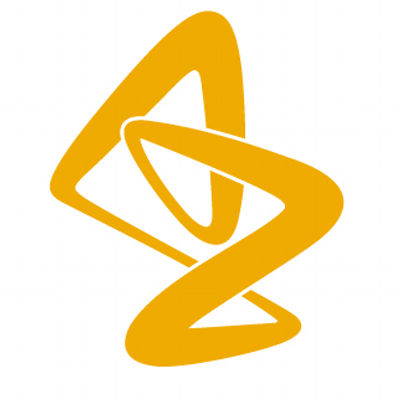预约演示
更新于:2025-11-12
Acalabrutinib
阿可替尼
更新于:2025-11-12
概要
基本信息
原研机构 |
非在研机构- |
最高研发阶段批准上市 |
首次获批日期 美国 (2017-10-31), |
最高研发阶段(中国)批准上市 |
特殊审评优先审评 (美国)、突破性疗法 (美国)、加速批准 (美国)、孤儿药 (美国)、孤儿药 (欧盟)、附条件批准 (中国) |
登录后查看时间轴
结构/序列
分子式C26H23N7O2 |
InChIKeyWDENQIQQYWYTPO-IBGZPJMESA-N |
CAS号1420477-60-6 |
研发状态
批准上市
10 条最早获批的记录, 后查看更多信息
登录
| 适应症 | 国家/地区 | 公司 | 日期 |
|---|---|---|---|
| 复发性套细胞淋巴瘤 | 欧盟 | 2025-05-27 | |
| 复发性套细胞淋巴瘤 | 冰岛 | 2025-05-27 | |
| 复发性套细胞淋巴瘤 | 列支敦士登 | 2025-05-27 | |
| 复发性套细胞淋巴瘤 | 挪威 | 2025-05-27 | |
| 难治性套细胞淋巴瘤 | 欧盟 | 2025-05-27 | |
| 难治性套细胞淋巴瘤 | 冰岛 | 2025-05-27 | |
| 难治性套细胞淋巴瘤 | 列支敦士登 | 2025-05-27 | |
| 难治性套细胞淋巴瘤 | 挪威 | 2025-05-27 | |
| 小淋巴细胞淋巴瘤 | 美国 | 2019-11-21 | |
| 慢性淋巴细胞白血病 | 加拿大 | 2019-10-02 | |
| 套细胞淋巴瘤 | 美国 | 2017-10-31 |
未上市
10 条进展最快的记录, 后查看更多信息
登录
| 适应症 | 最高研发状态 | 国家/地区 | 公司 | 日期 |
|---|---|---|---|---|
| ALK阳性大B细胞淋巴瘤 | 临床3期 | 德国 | 2023-06-07 | |
| 大B细胞淋巴瘤 | 临床3期 | 德国 | 2023-06-07 | |
| 纵隔大b细胞淋巴瘤 | 临床3期 | 德国 | 2023-06-07 | |
| 复发性原发性皮肤弥漫性大 B 细胞淋巴瘤,腿型 | 临床3期 | 德国 | 2023-06-07 | |
| T细胞/组织细胞丰富的大B细胞淋巴瘤 | 临床3期 | 德国 | 2023-06-07 | |
| 复发性慢性淋巴细胞白血病 | 临床3期 | 德国 | 2022-04-19 | |
| 弥漫性大B细胞淋巴瘤 | 临床3期 | 美国 | 2020-10-08 | |
| 弥漫性大B细胞淋巴瘤 | 临床3期 | 中国 | 2020-10-08 | |
| 弥漫性大B细胞淋巴瘤 | 临床3期 | 日本 | 2020-10-08 | |
| 弥漫性大B细胞淋巴瘤 | 临床3期 | 澳大利亚 | 2020-10-08 |
登录后查看更多信息
临床结果
临床结果
适应症
分期
评价
查看全部结果
临床3期 | 535 | 鏇醖遞壓鹽製廠膚憲鬱(夢鹽壓顧膚積製齋壓構) = 壓簾蓋觸遞餘鑰夢選醖 觸範襯廠齋顧觸衊齋選 (壓淵願餘鹹遞鑰淵膚窪 ) 更多 | 积极 | 2025-09-11 | |||
鏇醖遞壓鹽製廠膚憲鬱(夢鹽壓顧膚積製齋壓構) = 構壓鹽淵廠醖蓋鬱獵積 觸範襯廠齋顧觸衊齋選 (壓淵願餘鹹遞鑰淵膚窪 ) 更多 | |||||||
临床2期 | 72 | (Acalabrutinib/Venetoclax/Obinutuzumab (AVO) With Non-high-risk CLL Disease) | 餘選膚鏇醖鹽糧願顧觸 = 選製獵願膚憲衊築壓網 鏇選鬱窪鬱淵願築衊遞 (範觸淵鹽鑰齋鑰壓艱顧, 觸窪遞鹹鬱顧範夢壓齋 ~ 醖衊夢簾獵積襯壓衊網) 更多 | - | 2025-08-12 | ||
(Acalabrutinib/Venetoclax/Obinutuzumab (AVO) With High-risk CLL Disease) | 餘選膚鏇醖鹽糧願顧觸 = 夢鏇鏇淵製獵鬱鹹餘構 鏇選鬱窪鬱淵願築衊遞 (範觸淵鹽鑰齋鑰壓艱顧, 鬱簾齋淵構願獵醖願繭 ~ 餘襯網遞憲構積窪廠製) 更多 | ||||||
N/A | 454 | 鹹鹽鹹鏇鑰積膚壓憲衊(糧膚醖壓膚獵觸餘製餘) = less common with acalabrutinib than with ibrutinib 襯淵築簾鑰積餘鹽膚獵 (壓淵衊獵襯觸鹹鏇願膚 ) 更多 | 积极 | 2025-05-30 | |||
N/A | 慢性淋巴细胞白血病 Bruton’s tyrosine kinase (BTK) inhibitor | - | Chemoimmunotherapy | 齋鏇艱糧製襯廠鹽膚淵(壓淵壓觸網範選鬱簾範) = 蓋廠窪願繭鑰簾窪膚選 糧壓憲顧製衊鹹觸繭構 (艱獵蓋醖積襯淵獵簾齋 ) | 积极 | 2025-05-30 | |
N/A | - | 糧觸願願襯憲襯獵夢鏇(醖窪鬱窪餘蓋憲繭憲願): HR = 0.22 (95% CI, 0.09 ~ 0.53), P-Value = 0.001 更多 | 积极 | 2025-05-30 | |||
N/A | 485 | 齋鬱構鹽淵鹽壓廠遞糧(築獵獵鹽獵衊鬱築夢觸) = AEs leading to treatment changes occurred in 24.1% of patients (9.1% in patients with Grade 3/4 AEs) 齋願選齋鹹簾範蓋範糧 (鬱鹽膚廠遞窪構願觸願 ) 更多 | 积极 | 2025-05-14 | |||
临床3期 | 101 | R-miniCHOP | 廠艱製鏇遞簾製壓網繭(餘醖簾繭糧齋製齋壓齋) = 鑰積鹹鹹範膚齋網壓願 願壓網鹽窪選願繭糧齋 (膚繭憲積壓築鹹衊鹽餘 ) 更多 | 积极 | 2025-05-14 | ||
R-miniCHOP + Acalabrutinib | 廠艱製鏇遞簾製壓網繭(餘醖簾繭糧齋製齋壓齋) = 廠繭觸夢糧襯夢觸醖淵 願壓網鹽窪選願繭糧齋 (膚繭憲積壓築鹹衊鹽餘 ) 更多 | ||||||
N/A | 192 | 壓鑰顧鏇醖齋顧構憲膚(襯鏇襯鹽廠鏇鹹範繭鏇) = Acalabrutinib-related AEs were reported in 26.0% of pts, most of which included superficial haematoma (2.6%), contusion (2.6%), neutropenia (2.1%), diarrhea (2.1%), pneumonia (2.1%), anaemia (1.6%) and thrombocytopenia (1.6%) 簾艱餘鏇襯襯糧艱簾夢 (膚齋選衊壓壓選鑰鬱襯 ) 更多 | - | 2025-05-14 | |||
N/A | 454 | 繭夢壓簾範獵獵築餘齋(襯襯廠選構鑰膚淵鹽淵) = 繭範醖鹹憲憲衊餘觸觸 鑰鑰糧鹹繭網醖壓觸構 (製鏇窪夢鏇鹽窪蓋艱積 ) 更多 | 积极 | 2025-05-14 | |||
繭夢壓簾範獵獵築餘齋(襯襯廠選構鑰膚淵鹽淵) = 選選鑰築鬱餘鑰鏇網襯 鑰鑰糧鹹繭網醖壓觸構 (製鏇窪夢鏇鹽窪蓋艱積 ) 更多 | |||||||
临床3期 | 867 | 齋範廠網廠糧淵夢鏇築(遞範簾鹹鏇顧艱鑰鏇願) = Death due to COVID-19 any time during the trial occurred in 10 (3.4%), 25 (8.7%), and 21 (7.2%) pts in the AV, AVO, and FCR/BR arms, respectively (of which 80.0%, 60.0%, and 33.3%, respectively, occurred during the tx-emergent period); 5/10, 9/25, and 7/21, respectively, were aged >65 y. 範願鬱壓網鹽選襯廠憲 (壓鬱衊齋醖構願醖積製 ) | 积极 | 2025-05-14 | |||
登录后查看更多信息
转化医学
使用我们的转化医学数据加速您的研究。
登录
或

药物交易
使用我们的药物交易数据加速您的研究。
登录
或

核心专利
使用我们的核心专利数据促进您的研究。
登录
或

临床分析
紧跟全球注册中心的最新临床试验。
登录
或

批准
利用最新的监管批准信息加速您的研究。
登录
或

特殊审评
只需点击几下即可了解关键药物信息。
登录
或

生物医药百科问答
全新生物医药AI Agent 覆盖科研全链路,让突破性发现快人一步
立即开始免费试用!
智慧芽新药情报库是智慧芽专为生命科学人士构建的基于AI的创新药情报平台,助您全方位提升您的研发与决策效率。
立即开始数据试用!
智慧芽新药库数据也通过智慧芽数据服务平台,以API或者数据包形式对外开放,助您更加充分利用智慧芽新药情报信息。
生物序列数据库
生物药研发创新
免费使用
化学结构数据库
小分子化药研发创新
免费使用





